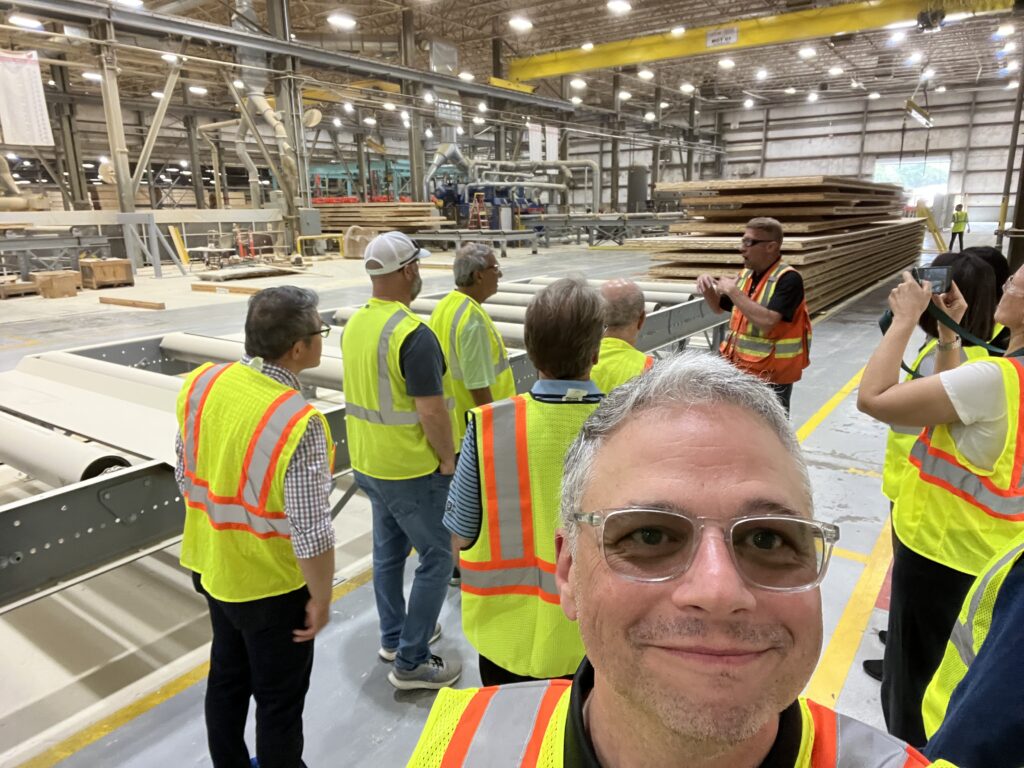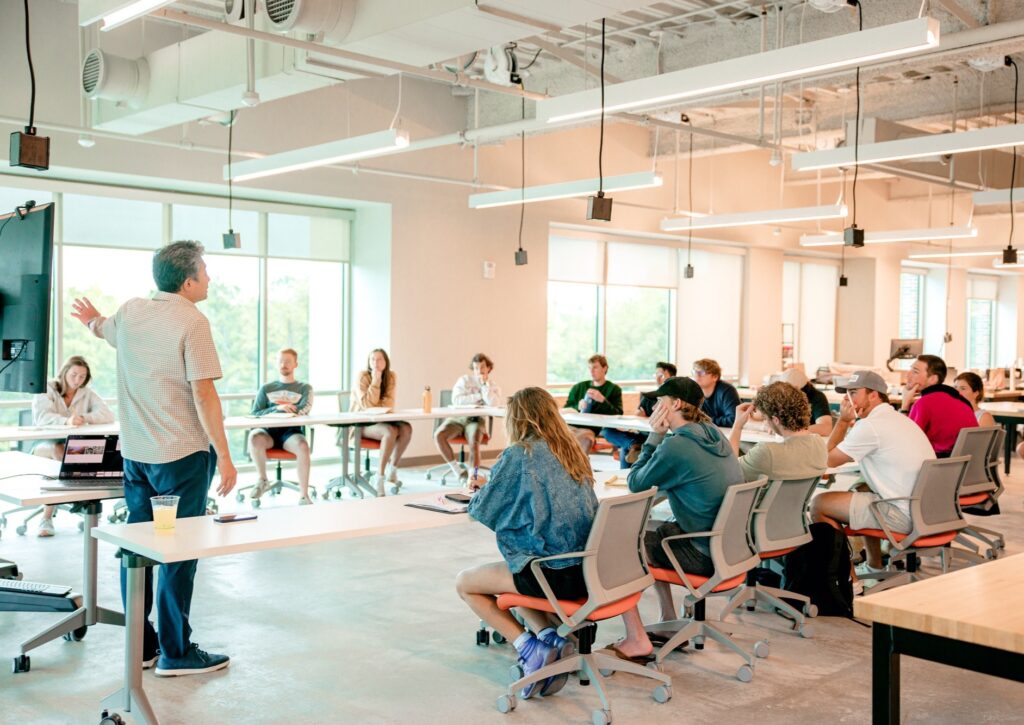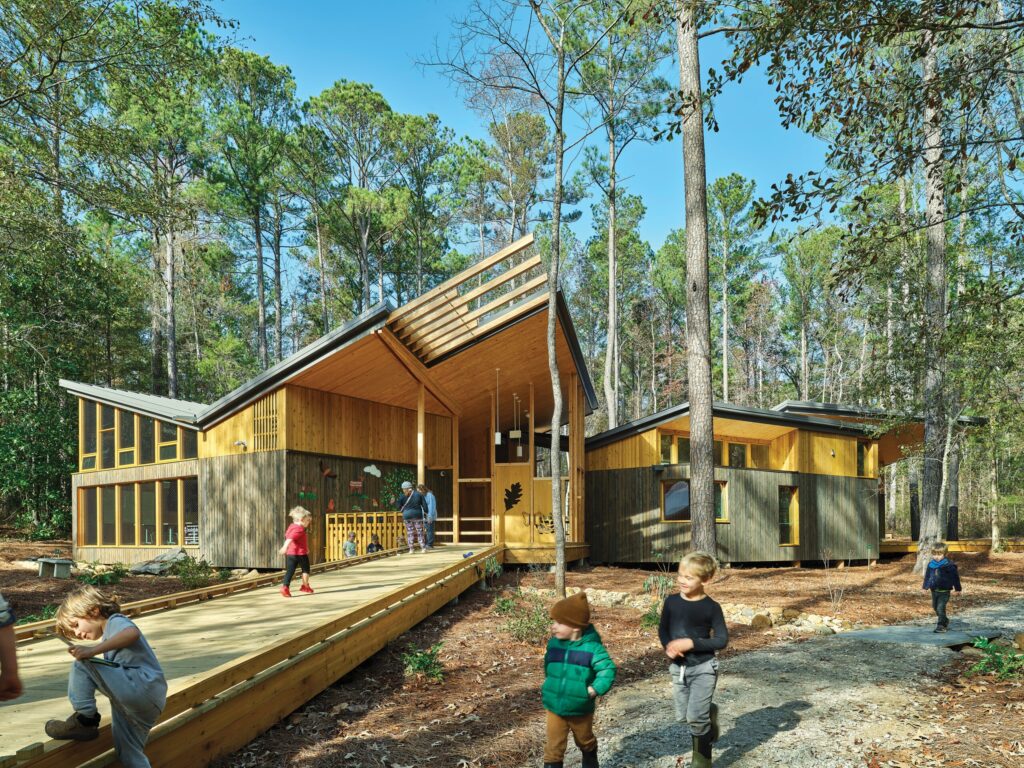By funkhaus
Last month, Anthony Piermarini, Studio Luz Principal and Associate Professor at Wentworth School of Architecture and Design, joined a group of educators at the 2025 Mass Timber Workshop at Auburn University, organized by Leers Weinzapfel Associates and sponsored by Softwood Lumber Board. There, he and other educators learned about mass timber, or engineered wood products that boast strength, durability, versatility, and sustainability. This rapidly growing technology is being more widely used in the design and construction fields, and the Auburn Mass Timber Collaborative (AMTC) is becoming a leader in mass timber research, teaching, and outreach in the Southeast region. Below, Anthony shares what he learned and experienced at the workshop.

Why Mass Timber Matters
“The global building industry is responsible for 40% of total consumption of resources, 30-40% of greenhouse gas emissions, and 30-40% of solid waste generation (Data Source: UNEP SBCI). The industry also accounts for 48% of global energy use, as compared to the 27% used by the transportation industry (Data Source: US Energy Information – Architecture 2030). Anything we can do as an industry to move towards carbon neutrality, or net zero in terms of energy, is important, and mass timber construction is one important tool in our toolbox.
What We Learned
AMTC offered us a series of workshops where we learned about the entire production line of this material, from forest management all the way to its implementation in contemporary construction. They discussed the ecology of forest management in depth, including the selection of trees for this application and what it means in terms of combating climate change, creating renewable products, and maintaining healthy forests. We looked at how the trees are processed in lumber mills, and then how they produce standard dimensional lumber for the construction industry. We also explored how these standards are translated into other high-performance products, like cross-laminated timber, which is used for decking and walls. Lastly, we were able to learn about a bunch of different buildings that were constructed using this technology. These buildings are very carefully made, and there’s a lot of precision that goes into them. Everything has to be carefully engineered and prefabricated in a shop, and then put together in the field.

Environmental & Safety Benefits
We walked away from it all with a deeper understanding of not only how these work technically, but how they can help reduce the carbon footprint of buildings and contribute to carbon neutrality in construction. Overall, mass timber has an embodied energy that is 3x less than steel, and 5x less than concrete. It also has safety benefits: Mass timber inherently has a fire resistance rating that outperforms steel or concrete. Where steel melts and bends in fire, mass timber chars and insulates itself, keeping it from burning more.
Aesthetic & Biophilic Benefits
Another fascinating part of what we learned was the exploration of aesthetic and biophilic benefits. Not only is it nice to look at, but our sense of well-being as humans is improved by being surrounded by wood, versus concrete or steel. When you walk into a building constructed with mass timber, it’s a sensual experience. It’s warm and tactile, and it feels inviting; all your senses are engaged. Mass timber is also naturally beautiful. You don’t have to paint it or cover it up with drywall. It just makes for a pleasant experience overall.

Where We Go From Here
Our challenge now is educating our students, colleagues, builders, and clients about this material as an option for projects. People are more familiar with steel and concrete, and are otherwise unaware of what timber can do. The building code is also catching up with the technology, so that’s been another barrier, as there are limits on how much or how high they will let you build with mass timber currently. But when we’re thinking about longer-term investments, this is really important to know about. For instance, constructing buildings on college campuses that are carbon neutral would be aligned with the missions of many institutions, and building housing that sequesters carbon and is meant to be used for generations of families means that this material can have compounding benefits for a long time to come.”